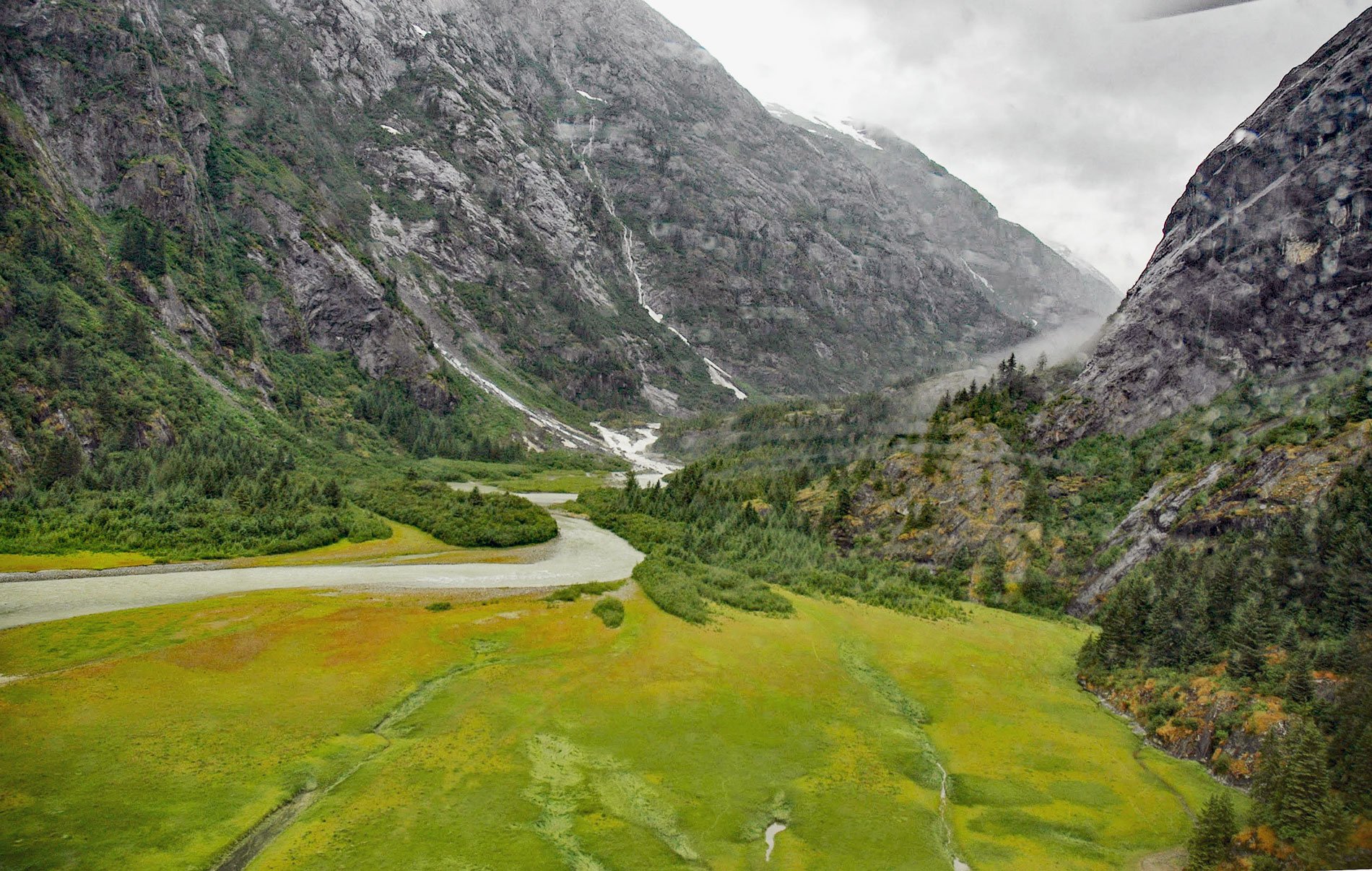North Dawes Glacier starts from the Stikine Icefield at an elevation of about 5,200 feet (1,585 m) on the western flank of Sheppard Peak and flows generally southwest for 15 miles (24 km) to a proglacial lake at an elevation of 1000 feet (305 m) which is 2 miles (3.2 km) long and drained by a stream 1.3 miles (2.1 km) long at the head of an inlet extending north from Endicott Arm, about 74 miles (119 km) southeast of Juneau and 51 miles (82 km) north of Petersburg, Alaska. The glacier is named after Dawes Glacier at the head of Endicott Arm and was first reported in 1961 by the U.S. Geological Survey. Dawes Glacier was named in 1891 by the U.S. Coast and Geodetic Survey for Henry L. Dawes who was a politician from Massachusetts who sponsored the Dawes Act. The bedrock underneath the higher elevations of the glacier represents the Coast Plutonic Complex which consists of granodiorite exposed mostly on peaks protruding through the icefield. To the west and underlying most of the flowing ice stream are metamorphosed sedimentary and volcanic rocks, generally schist and gneiss, which were derived from sedimentary and volcanic rocks that are older than 66 million years. At the lower elevations between the proglacial lake and sea level on Endicott Arm the bedrock is tonalite with some quartz diorite that developed during the waning stages of deformation and metamorphism in Coast Mountains between the Late Cretaceous and Paleocene.
When John Muir visited Endicott Arm in the 1880s, North Dawes Glacier was calving ice into the fjord. By 1923, the glacier had retreated, and the terminus was no longer in tidewater. From 1941 to 1961, William O. Field with the American Geographical Society observed the glacier several times and measured a retreat of 1.1 miles (1.8 km). In 1990, satellite imagery of the glacier shows the terminus in a proglacial lake about 0.8 miles (1.2 km) long. By 2005, the glacier had retreated another 0.8 miles (1.3 km) and the lake was 1.6 miles (2.5 km) long. By 2013, the glacier had retreated out of the lake for a combined retreat of 1.9 miles (3.1 km) between 1990 and 2013. A glacier’s mass budget is determined by the balance of snow accumulation and ablation, and the retreat of the terminus of North Dawes Glacier is the result of diminished accumulation of ice higher on the glacier and an increased melt rate. The result is ice thinning and exposure of new areas of bedrock. The accumulation zone is mainly at elevations between 3,120 and 3,610 feet (950-1100 m) which is now below the elevation of the summer snowline. This glacier is retreating at approximately the same rate but is losing a greater percentage of its total area and length as the nearby South Sawyer Glacier which starts from the same icefield.
The majority of glaciers in Southeast Alaska are thinning and many of them very rapidly. Some of the largest ice losses are occurring at tidewater glaciers that have experienced up to 2,100 feet (640 m) of thinning in their terminal reaches and 330 feet (100 m) or more at higher elevations. The tidewater glacier cycle was first recognized by Austin Post in 1975 and refers to the typically centuries-long behavior of tidewater glaciers that consists of recurring periods of advance alternating with rapid retreat and punctuated by periods of stability. Tidewater glaciers become unstable when the terminus retreats from a protective shoal or submerged moraine into a deep basin which initiates rapid calving. Once begun, the retreat phase of this cycle is subject to increasing positive feedbacks as surface slopes and flow velocities of the ice stream substantially increase at the terminus and throughout the length of such glaciers, causing significant drawdown of the parent ice field and further increasing calving at the terminus. This phase of the tidewater glacier cycle has been observed to lead to a terminus retreat in excess of 0.62 miles per year (1 km/yr) in Southeast Alaska. Because the magnitude of ice loss for tidewater glaciers is so large relative to non-calving glaciers, retreating tidewater glaciers tend to be the dominant contributor to sea level rise in Southeast Alaska. Read more here and here. Explore more of North Dawes River and Endicott Arm here:

